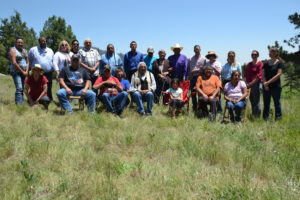Story
NAGPRA Update: Repatriations and Reburials
History Colorado has actively pursued the implementation of the Native American Graves Protection and Repatriation Act, or NAGPRA, since the passage of the law in 1990. By developing strong relationships with tribes, museums and government agencies across and beyond Colorado, we’ve been able to repatriate—or rebury on tribal lands—854 individuals and 2,108 associated funerary objects. (Note that "individual" can refer to part or all of a human's remains.)
NAGPRA does not specifically address reburial, yet History Colorado has regularly heard during consultation that reburial is the ultimate goal of repatriation. Some tribes prefer to take their ancestors to their reservations. Others prefer that their ancestors be returned to land as close as possible to the place where they were removed. This can sometimes be problematic because tribes no longer live where their ancestors once did and have no land readily available there. In an additional challenge, repatriating museums seldom own or manage land, or if the land in question is owned by private citizens or the federal or state government, each will have a variety of policies and regulations governing its use.
In 2012, in an effort led by the two Colorado Ute Tribes, History Colorado and several state and federal agencies began meeting to address the issue of land for reburial. These efforts culminated in a memorandum of understanding (MOU) that was signed in late 2013. The signatories have facilitated several burials since then.
History Colorado was recently involved in two multi-tribe, multi-agency reburials: one facilitated by the MOU and the other by the collaboration that the MOU has forged. It is always a great honor when our staff are invited to participate. In the first reburial, four tribes, two museums and three federal and state agencies came together to rebury thirty-one repatriated individuals. In the second, seven tribes collaborated with five museums to rebury 168 individuals. In both cases, the differing traditions of tribal participants were shared and respected. Other details of these reburials are not provided out of respect for the privacy of the occasions. But these two events speak to the power of collaboration in getting the work of NAGPRA done.

